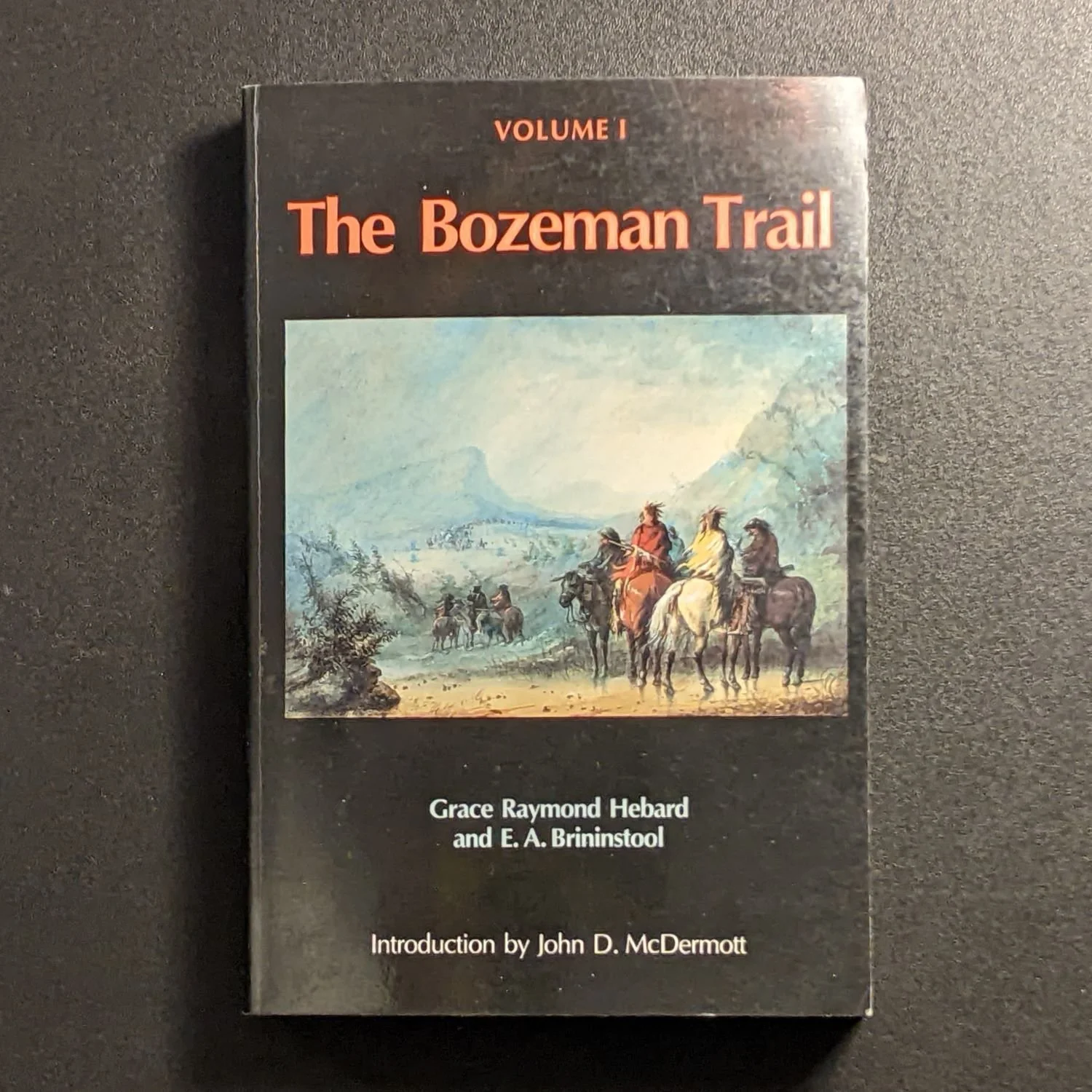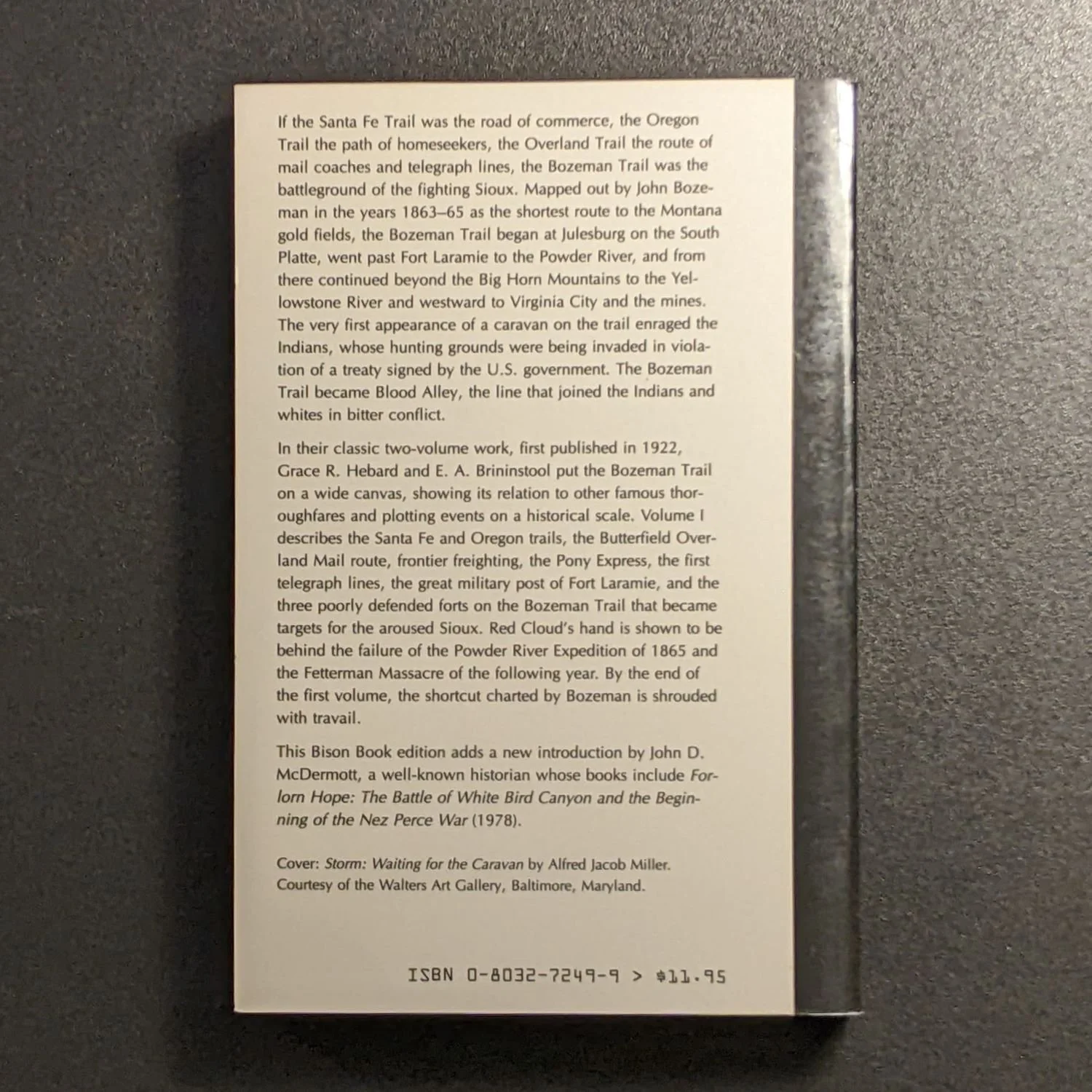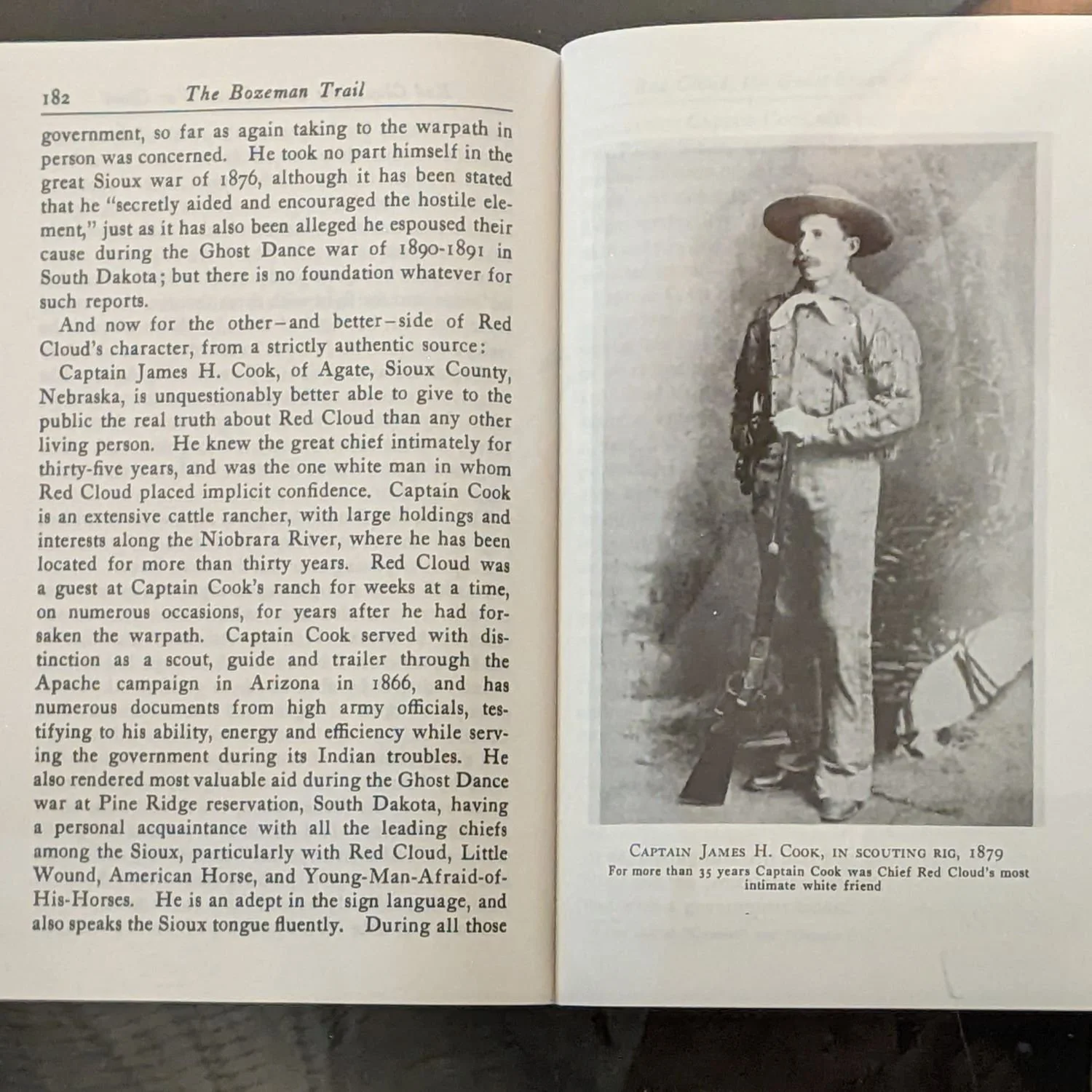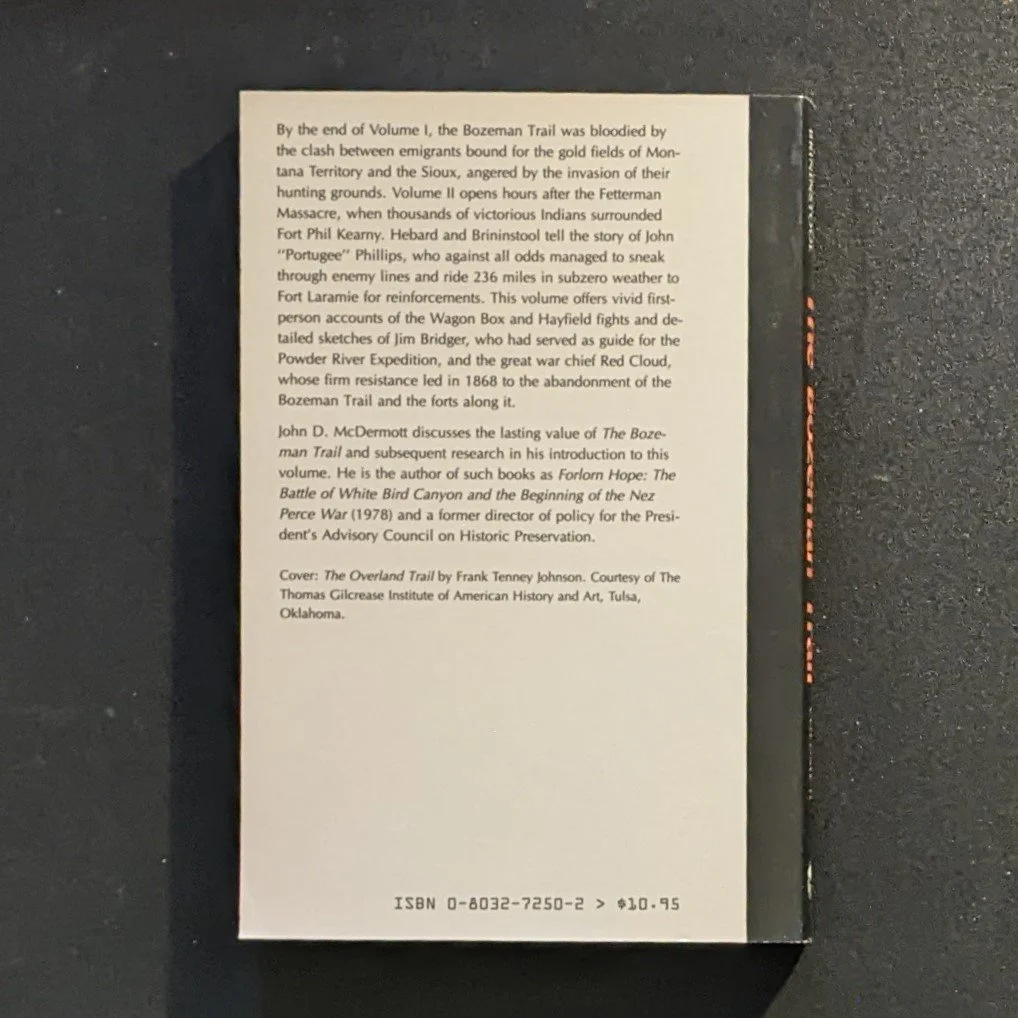 Image 1 of 6
Image 1 of 6

 Image 2 of 6
Image 2 of 6

 Image 3 of 6
Image 3 of 6

 Image 4 of 6
Image 4 of 6

 Image 5 of 6
Image 5 of 6

 Image 6 of 6
Image 6 of 6







The Bozeman Trail: Volumes I and II
The Bozeman Trail: Historical Accounts of the Blazing of the Overland Routes into the Northwest, and the Fights With Red Cloud's Warriors by Grace Raymond Hebard and E.A. Brininstool
This is a classic first published in 1922, documents the Bozeman Trail, mapped in 1863 by John Bozeman as the shortest route to the Montana gold fields. The trail began at Julesburg, Colorado on the South Platte River and ended in Virginia City, Montana. The trail became known as Blood Alley in the Indian wars.
The introduction of the authors in itself is fascinating. Born in Iowa in 1861, Grace Hebard joined the faculty of the University of Wyoming in 1891 and served as head of the Department of Political Economy from 1908 to 1931. Breinistool left New York in 1895 to work as a news reporter for the Los Angeles Times. He longed for simpler life and took great interest in the military conflicts in the Northern Plains.
Volume I
This volume begins with descriptions of the Santa Fe and Oregon trails, the Butterfield Overland Mail route, Pony Express and other routes to put the Bozeman Trail in perspective. After the Civil War, soldiers were sent from the battlefields to protect the flood of gold seekers heading west. Lakota Chief Red Cloud declared war when the Bozeman Trail opened a new intrusion on their hunting grounds. The Bozeman Trail became the most dangerous trail. The volume ends with an accounting of the Fetterman Massacre at Fort Phil Kearny.
Volume II
This volume picks up in the aftermath of the Fetterman Massacre through eventual abandonment of the Bozeman trail in 1868 and the forts along that trail.
Paperbacks - Like New
The Bozeman Trail: Historical Accounts of the Blazing of the Overland Routes into the Northwest, and the Fights With Red Cloud's Warriors by Grace Raymond Hebard and E.A. Brininstool
This is a classic first published in 1922, documents the Bozeman Trail, mapped in 1863 by John Bozeman as the shortest route to the Montana gold fields. The trail began at Julesburg, Colorado on the South Platte River and ended in Virginia City, Montana. The trail became known as Blood Alley in the Indian wars.
The introduction of the authors in itself is fascinating. Born in Iowa in 1861, Grace Hebard joined the faculty of the University of Wyoming in 1891 and served as head of the Department of Political Economy from 1908 to 1931. Breinistool left New York in 1895 to work as a news reporter for the Los Angeles Times. He longed for simpler life and took great interest in the military conflicts in the Northern Plains.
Volume I
This volume begins with descriptions of the Santa Fe and Oregon trails, the Butterfield Overland Mail route, Pony Express and other routes to put the Bozeman Trail in perspective. After the Civil War, soldiers were sent from the battlefields to protect the flood of gold seekers heading west. Lakota Chief Red Cloud declared war when the Bozeman Trail opened a new intrusion on their hunting grounds. The Bozeman Trail became the most dangerous trail. The volume ends with an accounting of the Fetterman Massacre at Fort Phil Kearny.
Volume II
This volume picks up in the aftermath of the Fetterman Massacre through eventual abandonment of the Bozeman trail in 1868 and the forts along that trail.
Paperbacks - Like New
The Bozeman Trail: Historical Accounts of the Blazing of the Overland Routes into the Northwest, and the Fights With Red Cloud's Warriors by Grace Raymond Hebard and E.A. Brininstool
This is a classic first published in 1922, documents the Bozeman Trail, mapped in 1863 by John Bozeman as the shortest route to the Montana gold fields. The trail began at Julesburg, Colorado on the South Platte River and ended in Virginia City, Montana. The trail became known as Blood Alley in the Indian wars.
The introduction of the authors in itself is fascinating. Born in Iowa in 1861, Grace Hebard joined the faculty of the University of Wyoming in 1891 and served as head of the Department of Political Economy from 1908 to 1931. Breinistool left New York in 1895 to work as a news reporter for the Los Angeles Times. He longed for simpler life and took great interest in the military conflicts in the Northern Plains.
Volume I
This volume begins with descriptions of the Santa Fe and Oregon trails, the Butterfield Overland Mail route, Pony Express and other routes to put the Bozeman Trail in perspective. After the Civil War, soldiers were sent from the battlefields to protect the flood of gold seekers heading west. Lakota Chief Red Cloud declared war when the Bozeman Trail opened a new intrusion on their hunting grounds. The Bozeman Trail became the most dangerous trail. The volume ends with an accounting of the Fetterman Massacre at Fort Phil Kearny.
Volume II
This volume picks up in the aftermath of the Fetterman Massacre through eventual abandonment of the Bozeman trail in 1868 and the forts along that trail.
Paperbacks - Like New
Publisher : University of Nebraska Press; Volume 1 edition (January 1, 1990)
Language : English
Paperback : 369 pages
ISBN-10 : 0803272499
Item Weight : 13.2 ounces
Dimensions : 5.5 x 0.75 x 8.25 inches
Publisher : University of Nebraska Press; Volume II edition (January 1, 1990)
Language : English
Paperback : 281 pages
ISBN-10 : 0803272502
ISBN-13 : 978-0803272507
Item Weight : 11.2 ounces
Dimensions : 5.5 x 0.6 x 8.25 inches